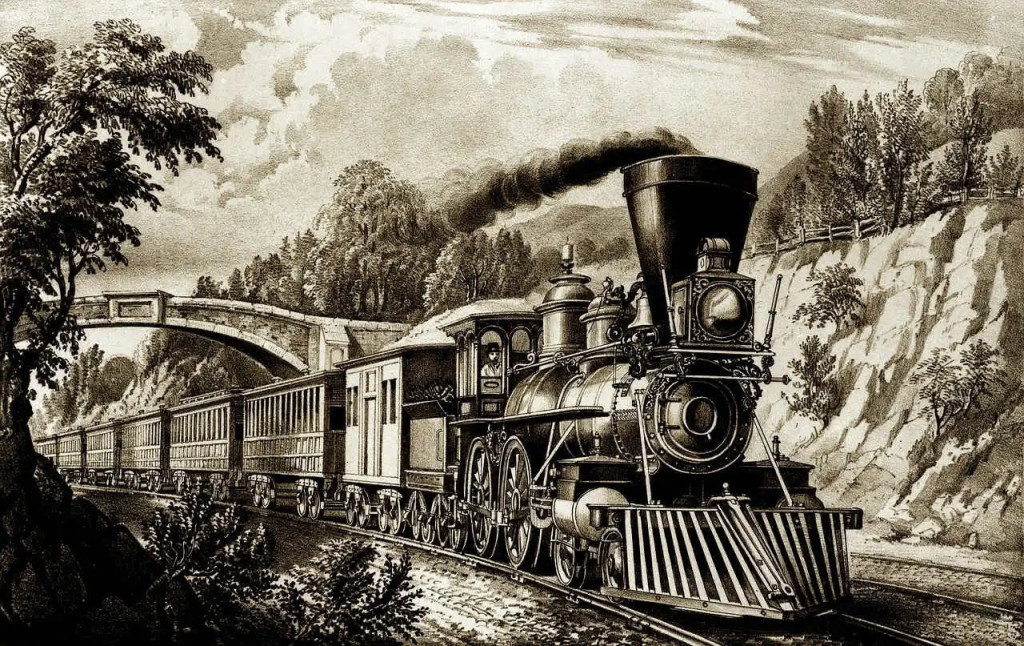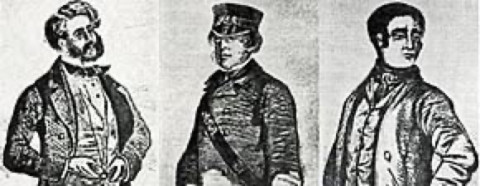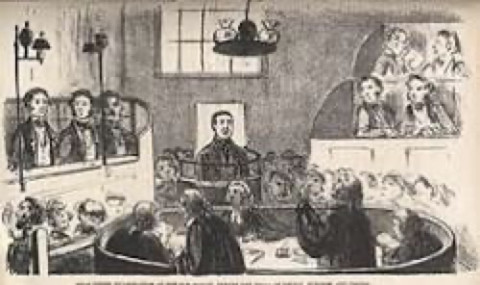The Great 1855 Gold Train Robbery
2024-08-13

The 1855 Great Train Robbery, also known as the South Eastern Railway Gold Bullion Robbery, is one of history's most famous train robberies. Most recorded reports on the robbery focus on the silver. In reality, the three boxes involved included small amounts of silver, weighed coinage, and some USA gold coins, highlighting the high value and allure of precious metals during that era.
The gold was destined to pay British troops fighting in the Crimean War.
The Robbery: The heist occurred on May 15, 1855, when three boxes, that collectively held the bullion, were transported for Chaplin & Co. by train from London to Paris via Folkstone and Boulogne. At the train station, they were placed in travelling safes made of iron and secured with two different locks. The safe’s keys were entrusted to the railway staff in London and Folkstone and also to the captain of the cross-channel steamer.
Execution: The thieves included a railroad company employee who was involved in helping store the boxes in the luggage van. He was able to take wax impressions of the keys and created illegal sets, which were then used for the robbery. The thieves had access to the train before it departed. They removed the gold bars and replaced them with lead bars, which were packaged similarly to the original gold bars to disguise the theft until the train reached its destination.
Loot: The total value of the stolen gold, combined with the silver and coins, was approximately £12,000, which would be worth US $2,084,340 today.
Investigation and Aftermath: The theft was discovered when the train arrived in Paris, and the lead was found in the safes instead of the expected bullion. Thorough investigations by Scotland Yard followed, leading to the arrest and conviction of the individuals involved in the heist. Edward Agar, one of the main perpetrators, turned informant, which helped Scotland Yard in revealing the details of the crime and led to the capture of the other members involved.
Summary of The Thieves Roles and Sentences:

William Pierce:
- Function: Mastermind and Planner
- Role: Pierce, a railway clerk and skilled locksmith was the principal architect of the robbery. He devised the plan, coordinated the efforts, and used his insider knowledge to facilitate the crime.
Edward Agar:
- Function: Forger and Safe Cracker
- Role: Agar was responsible for forging the keys needed to open the safes containing the gold. His expertise in forgery and lock-picking was essential to accessing the gold without detection.
James Burgess:
- Function: Inside Man and Train Guard
- Role: Burgess, a train guard, provided critical inside information and assistance. He helped switch the safes and ensured the operation went smoothly during the train's journey.
William Tester:
- Function: Planner and Executioner
- Role: Tester, a former police officer turned criminal, assisted in planning the robbery. He was involved in the logistics and handling of the safes during the heist.
William Spicer:
- Function: Executioner and Handler
- Role: Spicer was involved in the physical execution of the robbery, including handling the stolen gold and the replacement safes.
George Engleman:
- Function: Accomplice
- Role: Engleman played a supportive role in the logistics and transportation of the stolen gold.

"Transportation for life" was a penal sentence used in Britain during the 18th and 19th centuries, where convicted criminals were sent to penal colonies overseas, primarily in Australia. None of the main conspirators died in prison. They were all transported to penal colonies in Australia, where they lived out their lives in exile, performing hard labour. This included Agar, the informant who was allowed to provide for his family. While some may have lived out the remainder of their lives under harsh conditions, they did not die as prisoners in a traditional sense but rather as exiled convicts in the British Empire's colonies.
Movies
The Great Gold Robbery of 1855 has inspired several films, capturing the drama and intrigue of this infamous crime. These films, particularly the 1978 version, offer varying degrees of accuracy and entertainment, providing both fictionalized and more historical perspectives on the infamous gold heist.
1. "The First Great Train Robbery" (1978)
Director: Michael Crichton
Starring: Sean Connery, Donald Sutherland, Lesley-Anne Down
Plot: This film is a fictionalized account of the Great Gold Robbery of 1855, based on Michael Crichton's novel "The Great Train Robbery". The movie follows a group of criminals, led by Edward Pierce (a character loosely based on William Pierce), as they plan and execute the heist. The film combines elements of crime, adventure, and humor, making it one of the most well-known adaptations related to the robbery.
2. "The Great Gold Robbery" (1959)
Director: Monty Berman, Robert S. Baker
Starring: Lee Patterson, Kay Callard, Michael Goodliffe
Plot: This British film offers a more direct adaptation of the 1855 Great Gold Robbery, focusing on the planning and execution of the heist. It’s a less well-known film but is more faithful to the historical events than some other adaptations.
